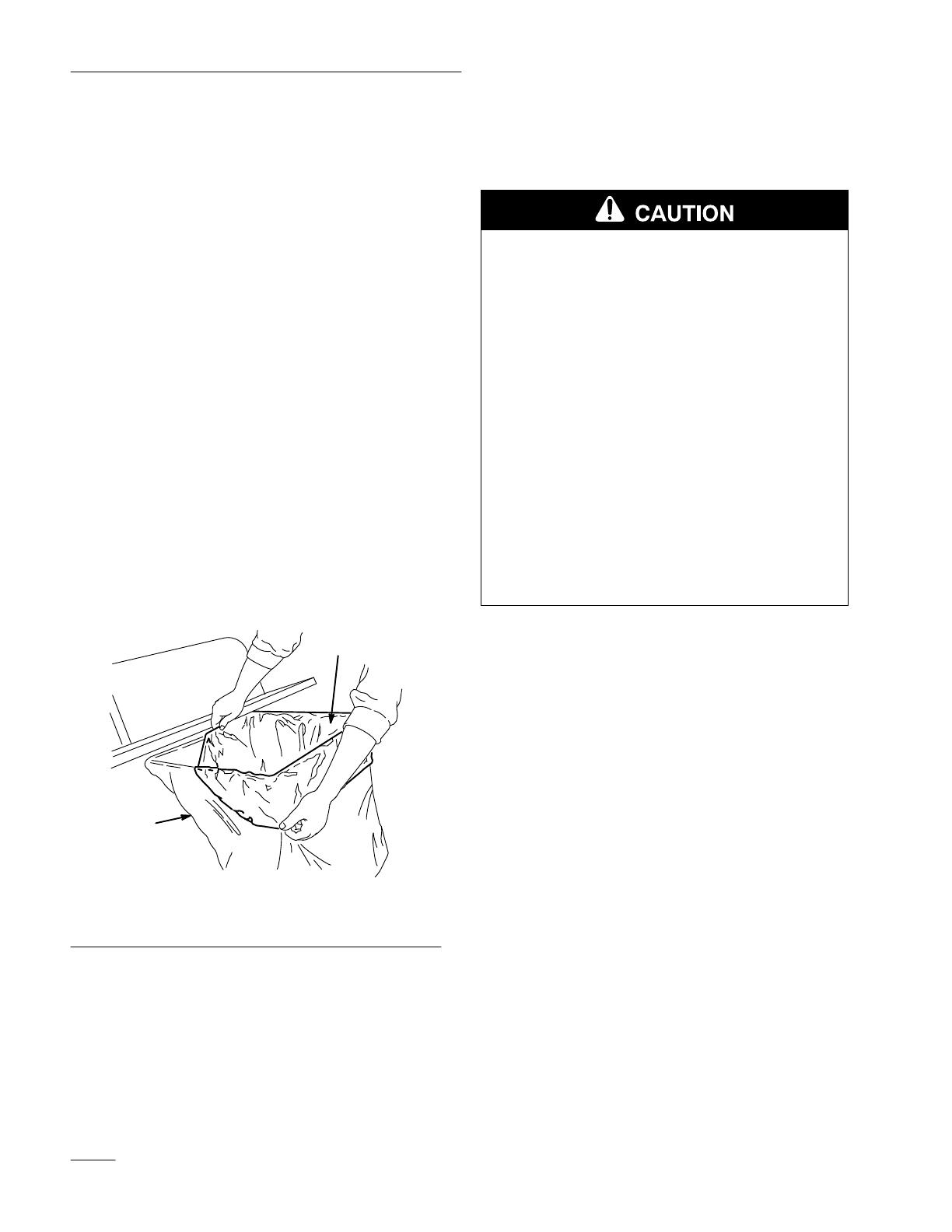
Operation
8
from getting under the mower and entering the
bagging system. If enough air doesn’t get under the
mower, the bagging system will plug.
Cutting Frequency
Cut the grass often, especially when it grows rapidly.
You will have to cut your grass twice if it gets
excessively long (refer to Bagging Long Grass,
page 8).
Cutting Technique
For best lawn appearance, be sure to slightly overlap
the mower into the previously cut area. This helps
reduce the load on the engine and reduces the chance
of plugging the bagging system.
Using Bags
Although not required, bags may be inserted into
each cloth grass bag as a liner to collect clippings and
make disposal more convenient (Fig. 8). If you use a
bag liner, remove the filled grass bag and close the
top of the liner. Then pull the liner out the grass bag
or turn the bag upside down while holding the handle
on the bottom of the grass bag (allows liner to slide
out).
1378
1
2
Figure 8
1 Cloth
grass bag
2
Bag (liner)
Bagging Speed
Most often you will bag with the tractor throttle in the
FAST position and drive in 1st gear, which is the
slowest ground speed. However, in extremely dry and
dusty grass, you may want to lower throttle speed and
shift gear selector to a higher gear to maintain ground
speed. The bagging system may plug if you drive too
fast, causing the engine to slow down with the extra
work load.
POTENTIAL HAZARD
• As the grass bags fill, extra weight is added
to the back of the mower.
WHAT CAN HAPPEN
• If you stop and start suddenly on hills, you
may lose steering control or the mower may
tip.
HOW TO AV
OID THE HAZARD
• Do not start or stop suddenly when going
uphill or downhill. Avoid uphill starts.
• If you do stop the mower when going
uphill, move the blade control to
DISENGAGE (stop the mower blades).
Then back down the hill using slow reverse
speed.
• Do not change speeds or stop on slopes.
Bagging Long Grass
Excessively long grass is heavy and may not be
propelled completely into the grass bags. If this
happens, the discharge tube and elbow may plug. To
avoid plugging the bagging system, mow the grass at
a high height-of-cut, then lower the mower to your
normal cutting height and repeat the bagging process.
Bagging W
et Grass
Always try to cut grass when it is dry because your
lawn will have a neat appearance. If you must cut wet
grass, use the conventional side discharge feature of
the mower. Several hours later, when the clippings are
dry, install the complete bagger attachment and
vacuum up the grass clippings.
Signs of Plugging
As you are bagging, a small amount of grass
clippings normally blow out the front of the mower.
An excessive amount of clipping blow-out indicates
that the bags are full or the system is plugged.












